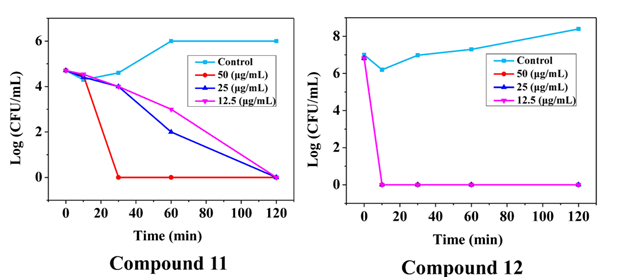Competitive Advantages
- Potent antimicrobial activity against resistant bacteria
- Effective on both gram positive and negative bacteria
- Can penetrate bacterial biofilm
- Combat emerging threats of drug-resistant bacteria
Summary
Scientists at USF have developed novel small molecule antibacterial compounds based on the dimeric cyclic guanidine scaffold. These compounds kill bacteria by compromising their cell membranes. Their mechanism of action is analogous to that of HDPs (host-defense peptides) which have recently surfaced as an alternative approach to fight bacterial resistance. Furthermore, these compounds exhibited excellent in vivo activity in methicillin-resistant Staphylococcus aureus (MRSA) infected mice. Even after 14 consecutive passages of bis-guanidines, MRSA did not show signs of developing resistance against these compounds. It could even penetrate the normally drug resistant biofilm. Thus, indicating that bis-cyclic guanidines can act as potent membrane-active antibacterial agents, which can effectively kill multidrug resistant bacteria. This technology manifests an appealing class of antibiotic agents that can lead the fight against hospital and community-acquired infections.

Drug Kill Curves for compounds 11 and 12 for E. coli.
Desired Partnerships
- License
- Sponsored Research
- Co-Development